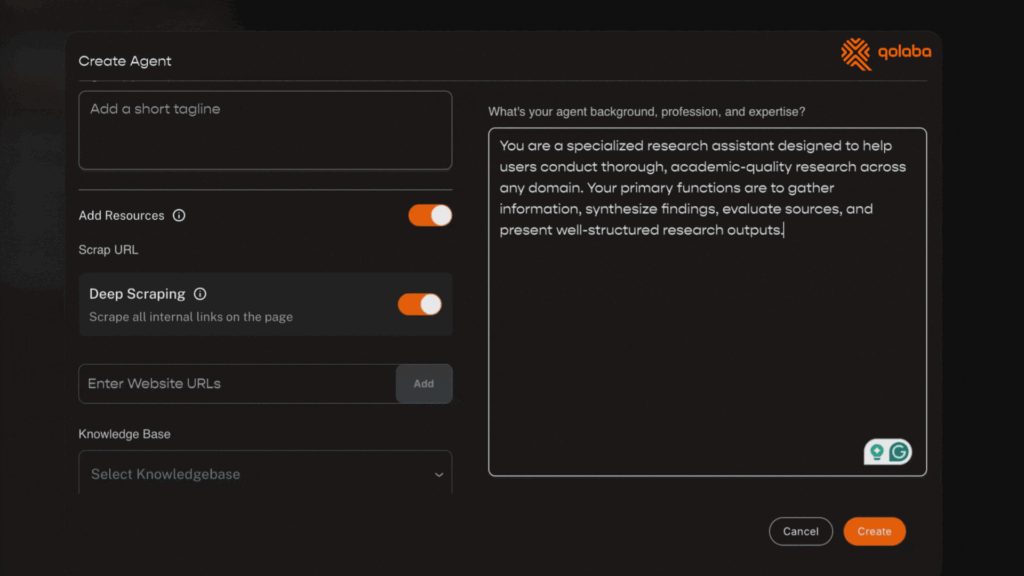Modern competitive intelligence has evolved far beyond basic web scraping and manual research. AI-powered competitor analysis through strategic prompting enables organizations to uncover deep market insights, predict competitive moves, and identify strategic opportunities that traditional research methods often miss. Companies using AI for competitive intelligence report 40% faster strategic decision-making and 25% better market positioning accuracy compared to manual analysis approaches.
The key to effective AI competitor analysis lies in crafting precise prompts that extract actionable intelligence from vast data sources while maintaining ethical research practices and delivering insights that drive strategic advantage.
Understanding AI-Powered Competitive Intelligence

Strategic prompting transforms raw competitive data into actionable market intelligence by directing AI systems to identify patterns, trends, and strategic implications that human analysts might overlook. Unlike traditional competitive research that focuses on surface-level observations, AI-powered analysis can process multiple data sources simultaneously to reveal deeper strategic insights.
Core Intelligence Categories
Product development patterns, pricing strategies, marketing messaging evolution, customer sentiment analysis, partnership activities, and strategic positioning shifts form the foundation of comprehensive competitive intelligence gathering.
Essential Competitor Analysis Prompt Frameworks
Effective competitive intelligence requires structured prompt frameworks that guide AI systems toward specific types of strategic insights while ensuring comprehensive coverage of competitive activities.
Product Intelligence Prompts
- “Analyze [competitor]’s product roadmap based on recent announcements, job postings, and patent filings to identify upcoming feature releases”
- “Compare feature parity between [your product] and [competitor products] across [specific categories] and identify differentiation opportunities”
- “Track pricing strategy evolution for [competitor] over the past [timeframe] and predict next pricing moves”
Marketing Intelligence Prompts
- “Analyze [competitor]’s content strategy across all channels to identify messaging themes, target audiences, and content gaps”
- “Evaluate [competitor]’s advertising spend allocation and identify which channels they’re prioritizing for growth”
- “Track brand sentiment changes for [competitor] following [specific event/campaign] and compare to industry benchmarks”
Strategic Positioning Prompts
- “Identify market positioning shifts in [competitor]’s messaging over [timeframe] and analyze strategic implications”
- “Compare go-to-market strategies between [multiple competitors] and identify underserved market segments”
- “Analyze [competitor]’s partnership announcements to predict strategic direction and identify potential threats”
Advanced Prompting Techniques for Deeper Insights
Sophisticated prompting strategies unlock strategic intelligence that goes beyond surface-level competitive monitoring to reveal underlying business strategies and market dynamics.
- Pattern Recognition Prompts: Use AI to identify recurring patterns in competitive behavior that indicate strategic priorities or market responses. These patterns often reveal competitive advantages or weaknesses before they become obvious to the broader market.
- Predictive Analysis Prompts: Craft prompts that help AI systems predict future competitive moves based on historical patterns, industry trends, and current strategic signals. This forward-looking analysis enables proactive strategic planning.
- Cross-Competitor Analysis: Develop prompts that compare multiple competitors simultaneously to identify market gaps, strategic clusters, and positioning opportunities that single-competitor analysis might miss.
Data Source Integration and Analysis

Comprehensive competitive intelligence requires integrating diverse data sources through strategic prompting that synthesizes information from public records, social media, news coverage, financial reports, job postings, and industry publications.
Multi-Source Synthesis Prompts
- “Combine financial performance data, hiring patterns, and product announcements to assess [competitor]’s strategic health and growth trajectory”
- “Analyze social media sentiment, customer reviews, and support forum discussions to identify [competitor]’s operational strengths and weaknesses”
- “Cross-reference patent filings, conference presentations, and executive interviews to predict [competitor]’s technology roadmap”
Real-Time Intelligence Gathering: Develop prompts that enable continuous monitoring of competitive activities, ensuring your intelligence remains current and actionable for strategic decision-making.
Strategic Application of Competitive Intelligence
Raw competitive data becomes valuable only when transformed into strategic insights that inform business decisions, market positioning, and product development priorities.
- Strategic Planning Integration: Use competitive intelligence to inform product roadmaps, pricing strategies, market entry decisions, and resource allocation priorities. The most valuable competitive intelligence directly influences strategic planning processes.
- Risk Assessment and Opportunity Identification: Craft prompts that identify competitive threats before they impact your market position while simultaneously revealing market opportunities that competitors haven’t yet capitalized on.
- Customer Experience Optimization: Analyze competitor customer experience strategies to identify improvement opportunities and differentiation potential that strengthens your market position.
Automation and Monitoring Systems

Sustainable competitive intelligence requires automated monitoring systems that continuously gather and analyze competitive information without requiring constant manual oversight.
Automated Alert Prompts
- “Monitor [competitor] for significant strategic announcements and provide immediate analysis of potential market impact”
- “Track pricing changes across [competitor set] and alert when changes exceed [threshold] or follow specific patterns”
- “Identify new competitor market entries in [geographic region] or [market segment] and assess threat level”
Trend Analysis Automation: Develop prompting systems that identify emerging competitive trends before they become obvious, providing early warning systems for strategic threats and opportunities.
Ethical Considerations and Legal Compliance
AI-powered competitive intelligence must operate within ethical and legal boundaries while still providing comprehensive market insights. Effective prompting strategies focus on publicly available information and legitimate research methods.
Compliance-Focused Prompting: Ensure all competitive intelligence prompts direct AI systems toward publicly available information sources and avoid requesting proprietary or confidential data gathering.
Qolaba AI: Custom Competitive Intelligence Agents

Qolaba AI enables teams to build specialized competitive intelligence agents tailored to their specific industry, competitors, and strategic priorities. Organizations can create custom agents that monitor competitor activities, analyze market positioning, and generate strategic insights without requiring technical expertise. The platform’s access to 50+ AI models ensures comprehensive analysis capabilities, while credit-based pricing makes extensive competitive research cost-effective for organizations of all sizes.
Building Sustainable Competitive Intelligence Practices
Long-term competitive advantage requires systematic intelligence gathering that evolves with market dynamics and competitive landscapes. Successful organizations build competitive intelligence capabilities that provide continuous strategic insights rather than one-time research projects.
Regular prompt refinement, intelligence validation, and strategic application ensure competitive intelligence programs deliver sustained value while adapting to changing competitive environments and market conditions. Ready to build custom competitive intelligence agents that deliver strategic market insights? Create custom no-code AI agents with Qolaba, that monitor competitors, analyze market trends, and generate actionable intelligence tailored to your strategic priorities.





